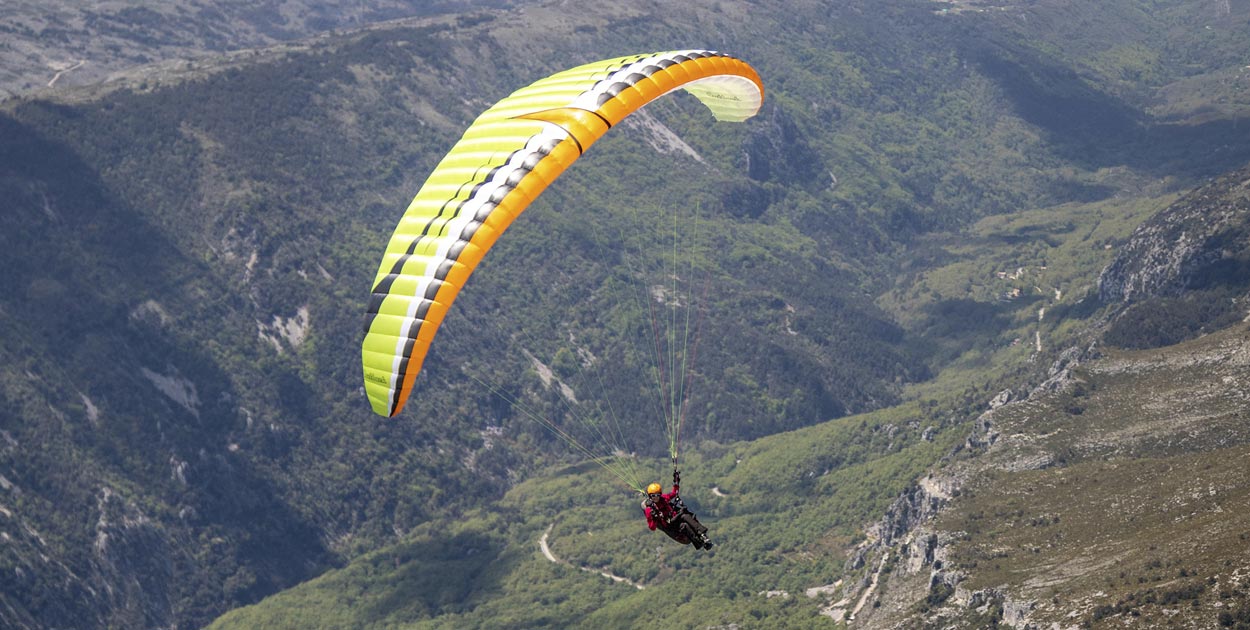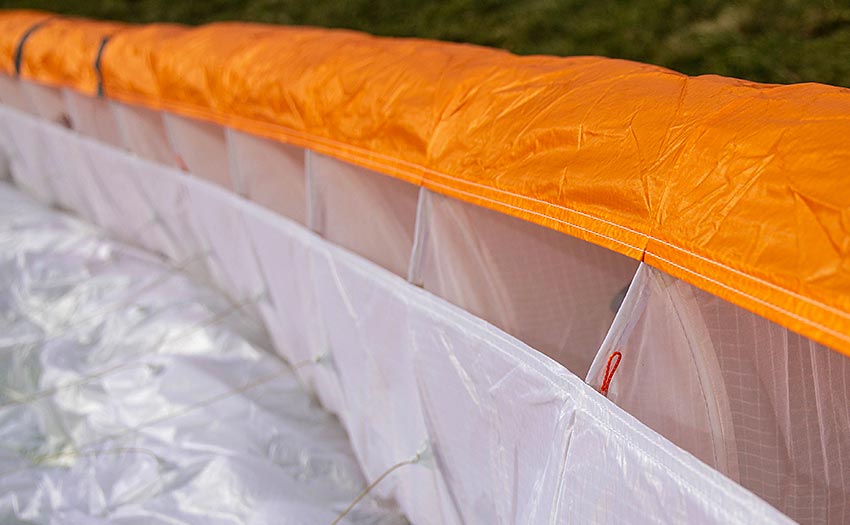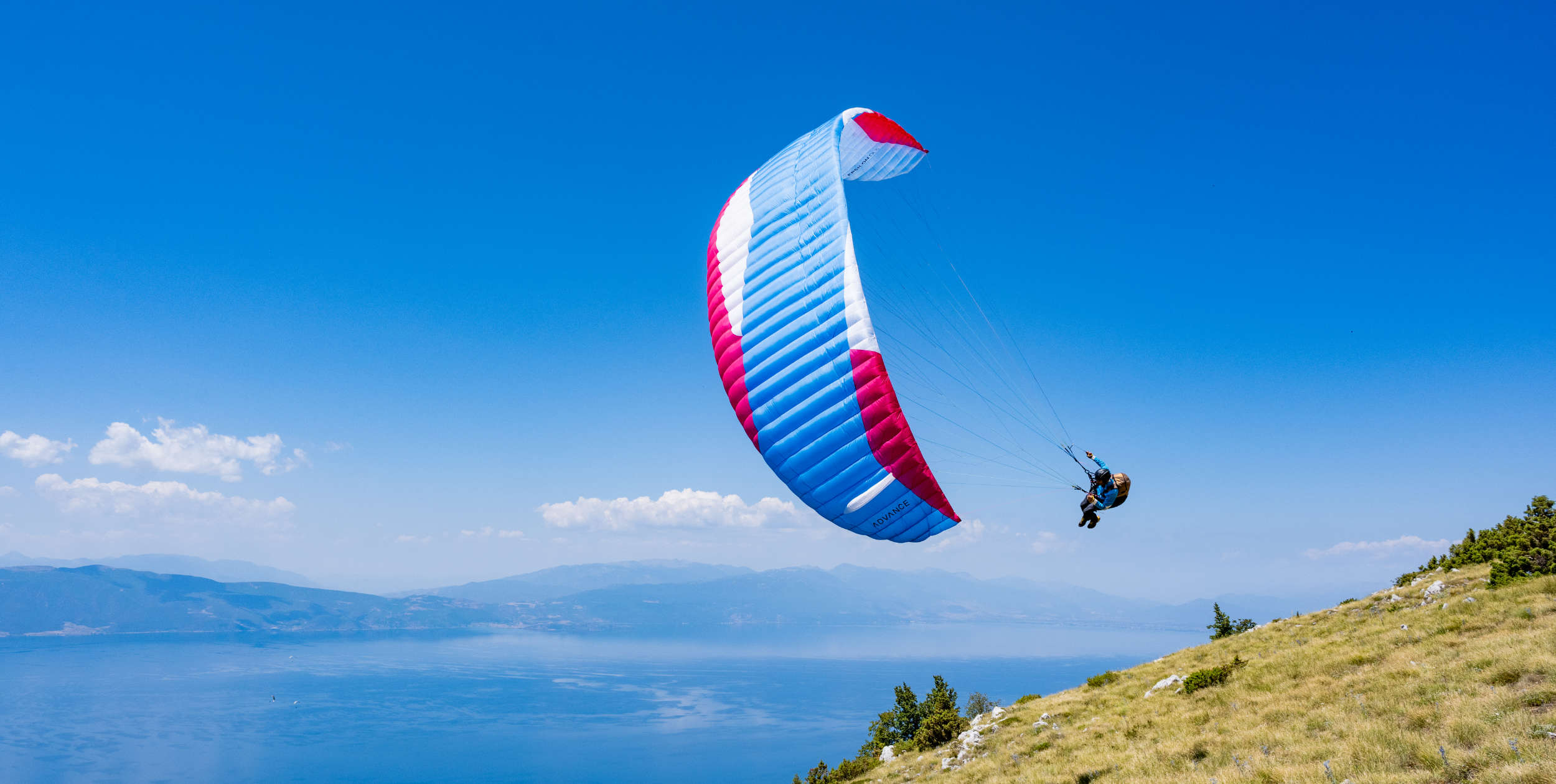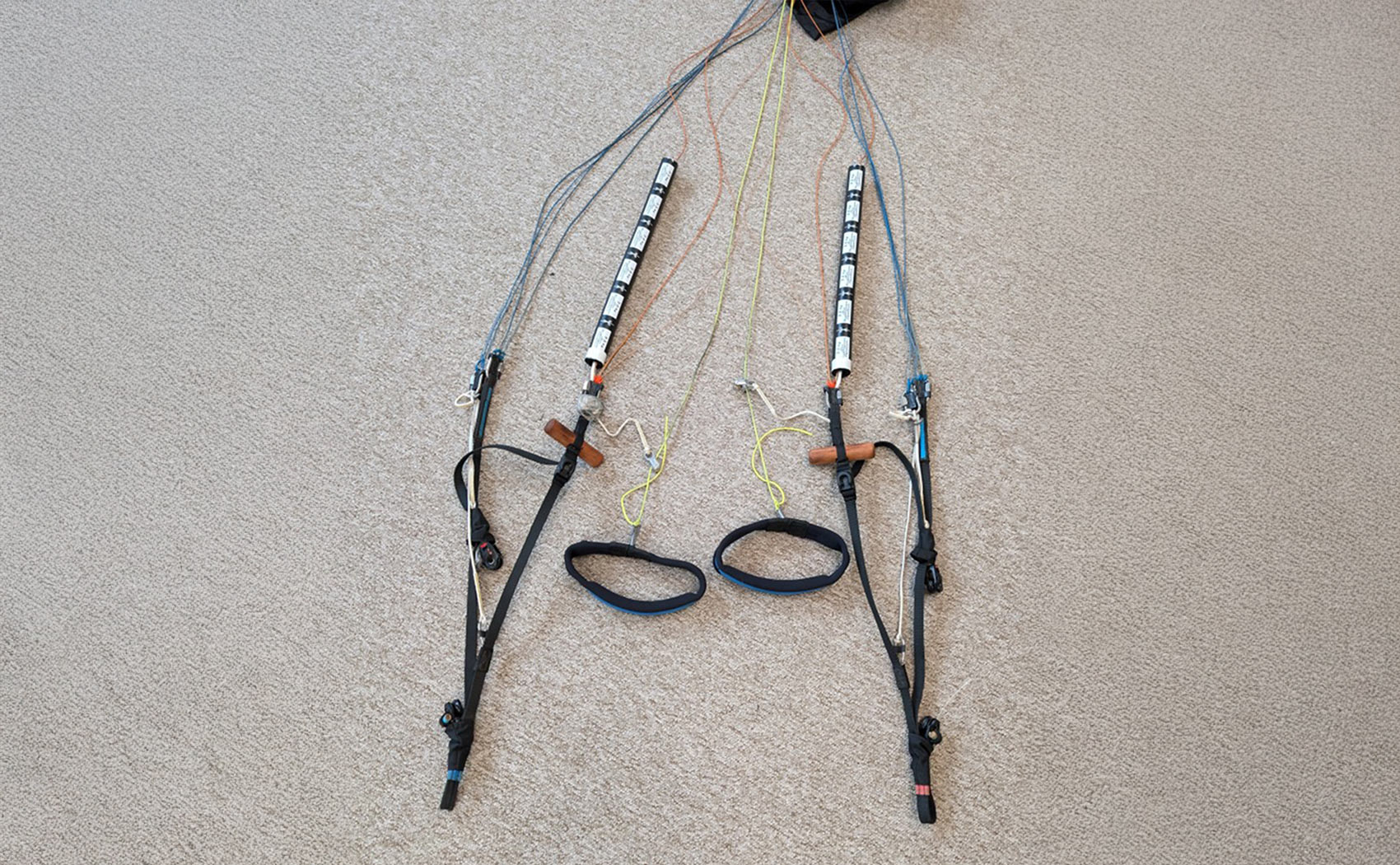
Designed for hike-and-fly and certified EN B, Mac Para’s Outback is a one-size-fits-all 21m² lightweight paraglider with a huge 50kg weight range. It weighs just 2.7kg and can be flown at 55kg to 105kg all up.
Of course, its behaviour is different depending on wing loading. Up at the top end of the spec Mac Para refer to it as a speed glider, the middle sector is “hike-and-fly”, and the bottom 20kg is “thermals”.
It is rated EN B at all wing loadings, and in fact the test report shows almost all As at both ends of the weight range – the only B is for spiral exit.
As you’d expect of a hike-and-fly wing, the Outback is small and compact. It’s a simple design with 36 cells. Mac Para supply a half-length, lightweight concertina-packing bag to protect the supporting rods. The concertina bag is not noticeably heavier than a stuff sack, but it protects the leading edge and once you get the hang of the packing technique it’s easy to use.

Materials
The sail is made mostly from Porcher Skytex 27, with the slightly heavier 32g/m2 on the leading edge. The riser set is lightweight but not uber-light. The lines are attached directly to the risers, or you can order softlinks, but there are proper brake handles with press-stud attachments, which are comfortable if you want to fly for hours.
Risers are narrow, colour-coded Dyneema, and the main lines are sheathed and colour-coded too: orange for the stabilos and brakes, red for the As, and all the rest are bright yellow.
So, for a hike-and-fly wing you need portability, tick, and easy-launching abilities. Also tick. The light sail comes up easily without overflying you. It doesn’t need any special techniques, and I found forward launching in nil wind or reverse launching in reasonable breezes to be straightforward.
The lines are fairly short so it doesn’t occupy too much space on launch, good if you need to lay it out in a tight spot. The sheathed lines help with not catching on vegetation or sharp stones – the wing feels like it’s been designed to cope with rough launches.

Thermalling
I come into the Thermals section of the Outback’s weight range (63kg lightweight mode, to 71kg with full kit and baggage), so after I’d enjoyed some hike-and-flies with it, I also took it out in the daytime with my everyday harness and reserve for some thermalling.
We had some decent conditions and good thermals, and I agree with Mac Para’s claims that it does indeed thermal, very nicely. I found it very comfortable in the air with hardly any pitching movement, and very responsive. The good feedback made thermalling easy, and the fact that it’s small and compact meant I felt I had good authority over it, adding to my sense of ease.
It climbed as well as anything else in the air. I needed to test big-ears in earnest to keep out of airspace – they are quite small ears and have to be held in, but they do the job.
In terms of speed, despite being left behind by Marcus on the Gracchio (see previous pages) which is super-speedy, I didn’t feel it was slow. The True AirSpeed indicator probe confirmed this – I measured around 37km/h at trim speed, going up to 48km/h on full-bar which I consider to be a very decent speed, especially as I was nowhere near the top of the weight range.
Marcus is also within the Outback’s weight limits, so he took it out for a fly as well. He flew it at around 90kg all up, which is the crossover of the hike-and-fly and speed-wing sectors, but he said it didn’t feel too radical at all. He was very impressed with how lifty it is and how well it climbs. Mac Para actually say that you get the most enjoyable characteristics from the Outback when it’s well loaded – the best precision, speed and dynamism.

One to share
In conclusion, I think the Outback makes a very good hike-and-fly and mountain wing. It’s light – not the lightest out there, but 2.7kg is more than acceptable – and features like the sheathed lines and proper brake handles make it rugged enough to cope with rough launches, and give it the in-flight comfort and performance you need so you don’t end up heading straight down to the landing after 15 minutes’ airtime. It’s a pleasure to thermal and comfortable in rough air.
As an aside, any couples with young children who take turns to escape the family duties for a hike-and-fly, one wing with a wide weight range … that has to be handy for a wing to share?
MANUFACTURER’S SPECIFICATIONS
Mac Para say: “A classic double surface light-weight wing. Easy to launch in tricky places, excellent glide performance and speed”
Use: Hike and fly, thermalling
Pilot level: Intermediate pilots and above
Sizes: 21
Flat area (m²): 20.84
Certified take-off weight (kg): 55-75 (Thermals), 70-90 (hike & fly), 90-105kg (speed glider)
Glider weight (kg): 2.7
Cells: 36
Flat aspect ratio: 4.7
Certification: EN B











